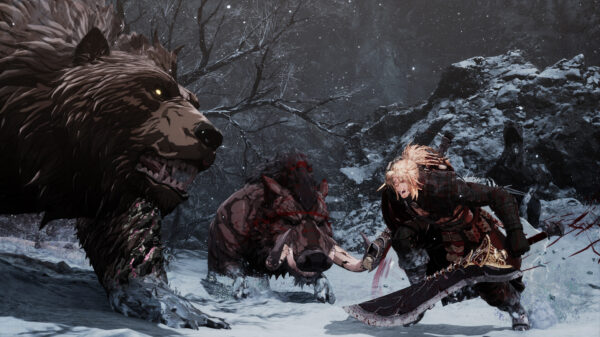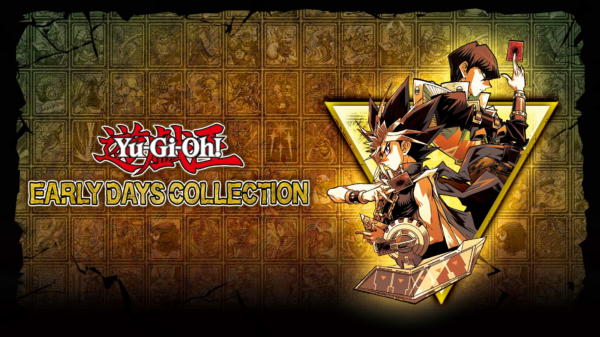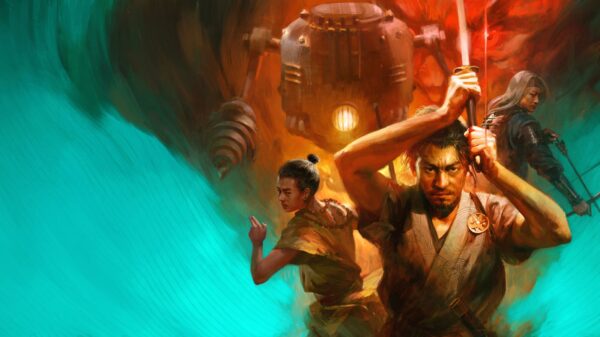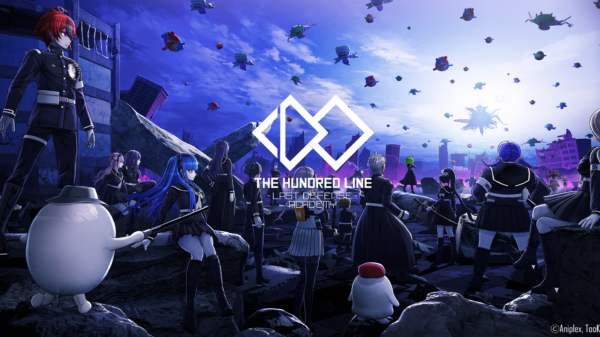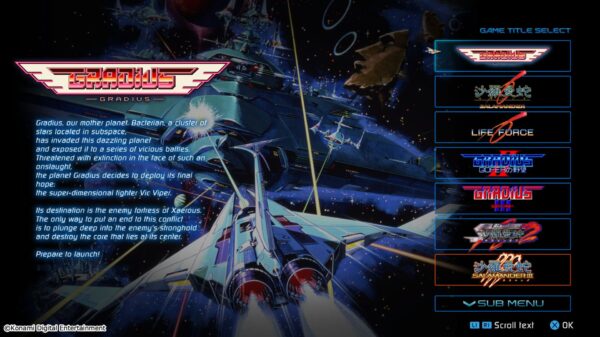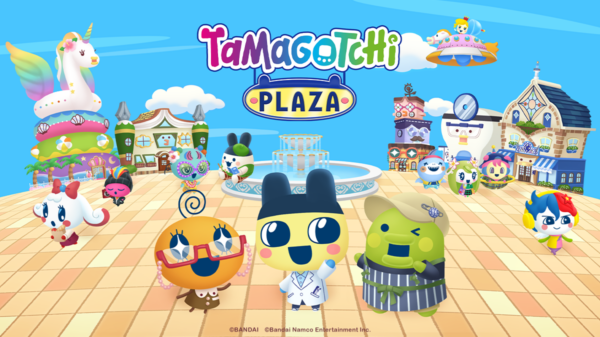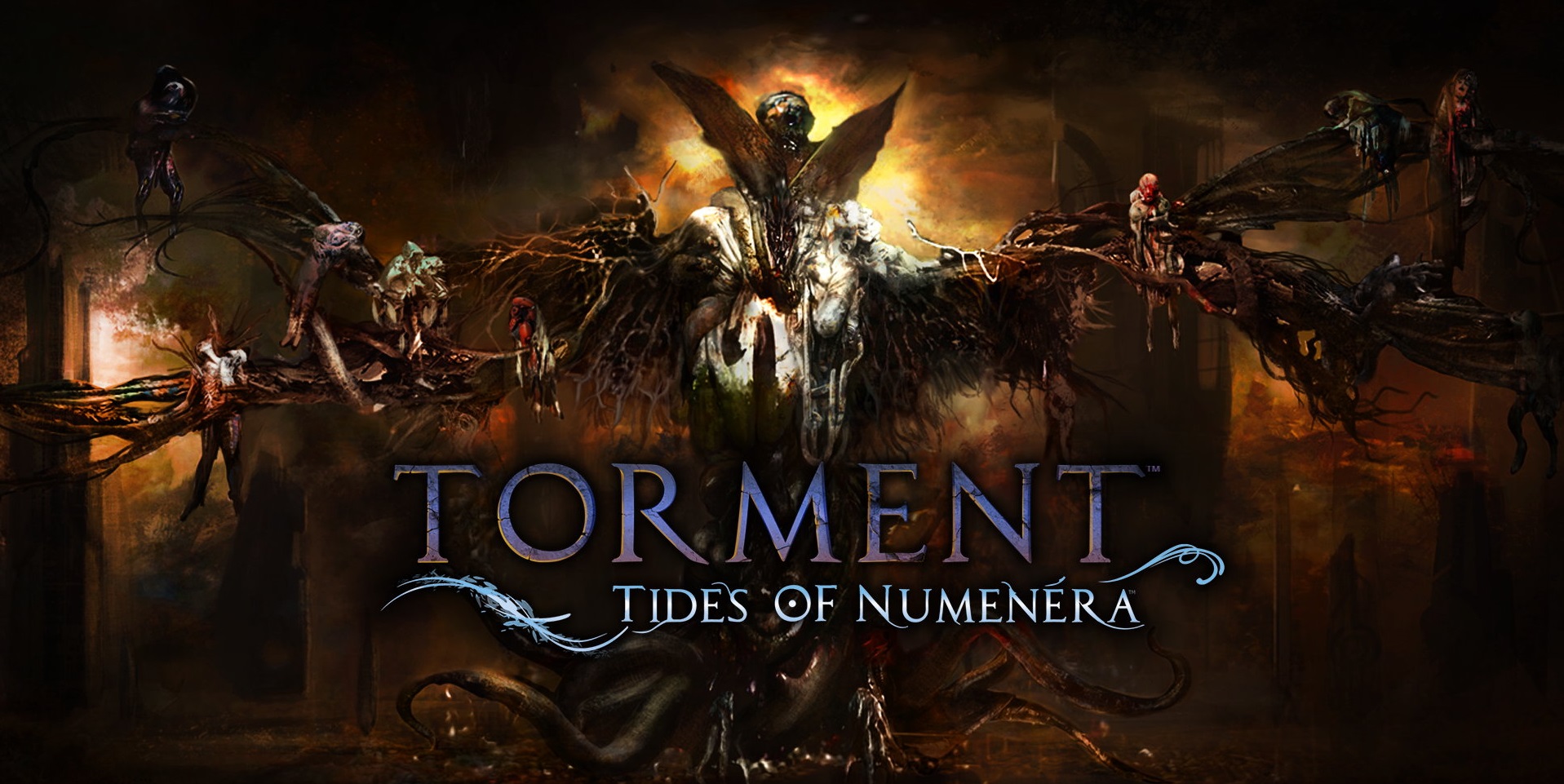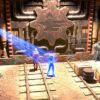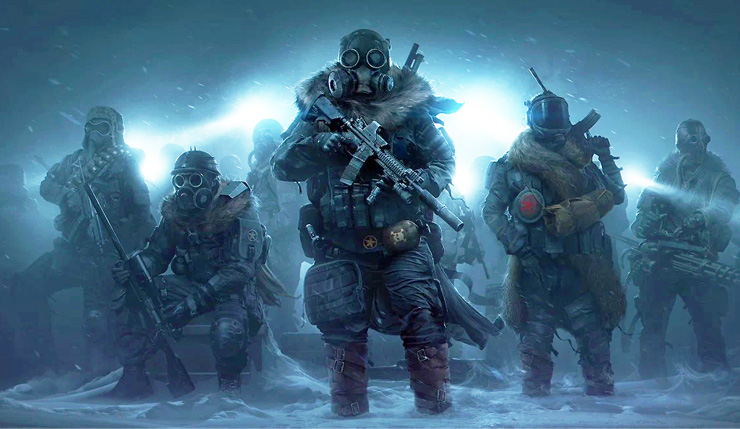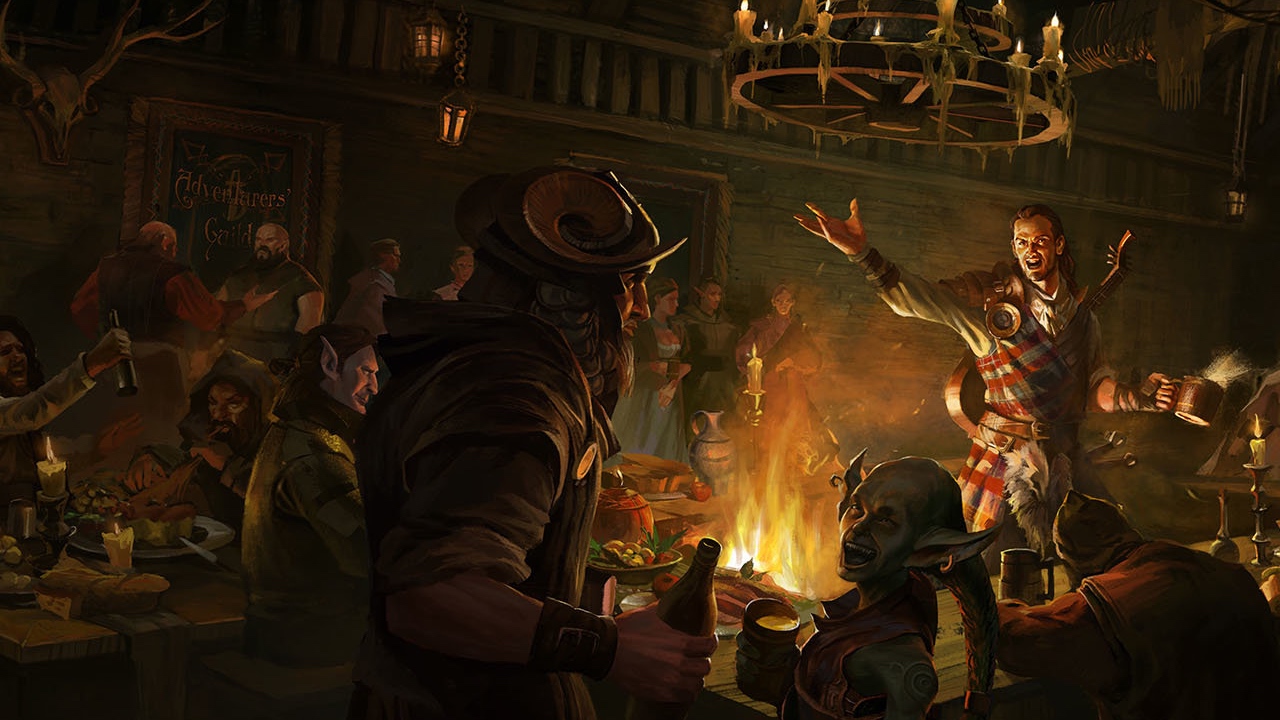Torment: Tides of Numenera is a complex beast. Many of its parts are well-done and the core of the game is solid, many other elements are less than stellar, especially on the Xbox One.
Torment: Tides of Numenera
Developer: inXile Entertainment
Price: $49.99
Platform: Xbox One (reviewed)
MonsterVine was supplied with an Xbox One code for review
In terms of sheer content, you’re definitely getting your money’s worth here. For slightly less than a AAA title, Torment: Tides of Numenera will easily supply tens of hours of gameplay. The quality of that content depends on who you are as a player, at least in part.
Torment: Tides of Numenera is complex, there’s no way around it. The majority of my first couple of hours with the title were spent clumsily making my way around while I figured out what the menus, items and concepts were. While I eventually came away with a pretty good handle on things, I’m definitely still hazy about a few of the details. The concept of Tides in particular seems extremely convoluted.
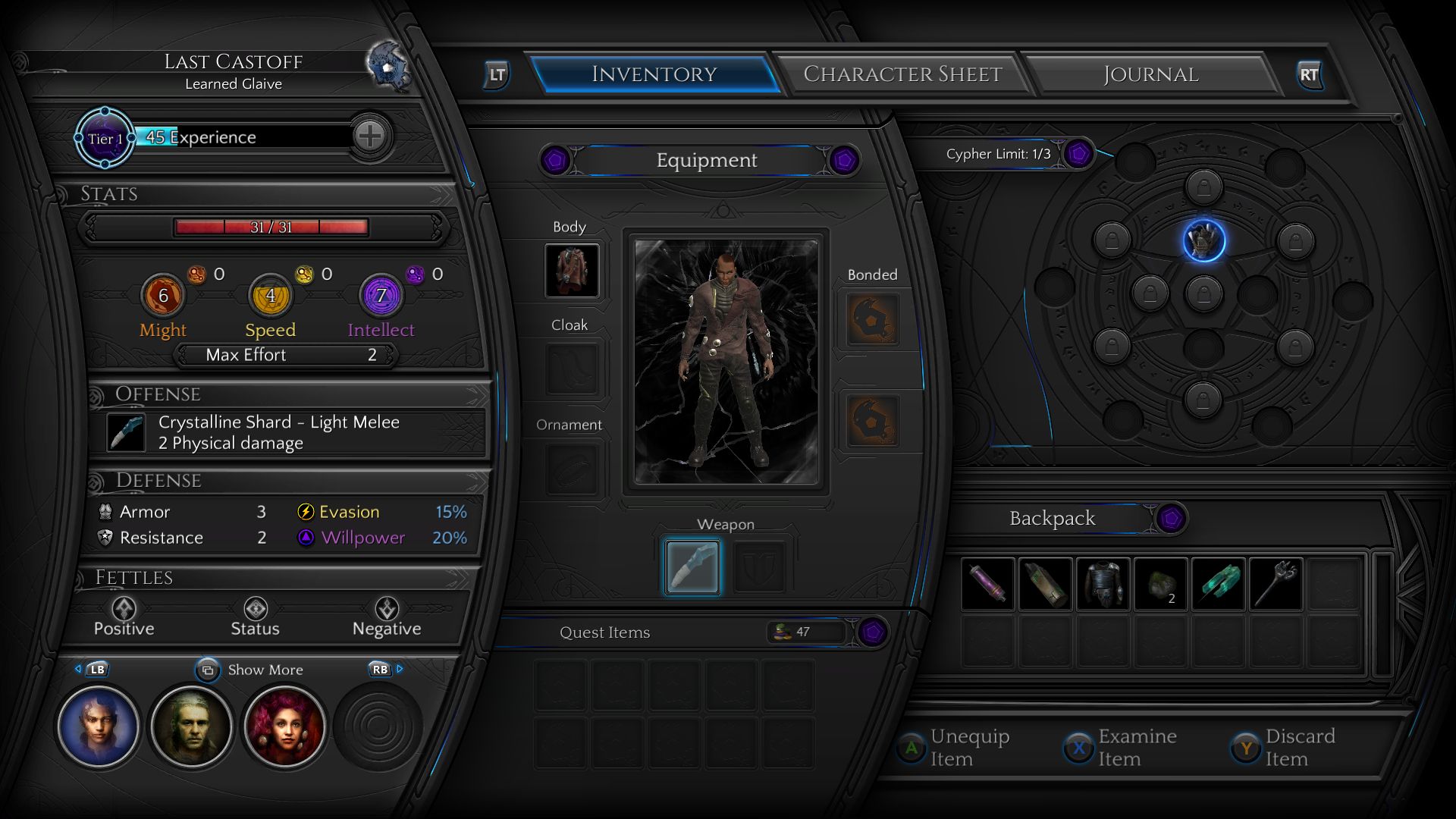
This game is, at its heart, an old school CRPG. That means there are loads and loads (and loads) of text to can through. Most of the story of the game is told to you in a very text-based RPG way with phrases like “You find yourself falling towards the Earth,” amongst others. Nearly every text box is filled with options that you can choose from, even if those options have no effect on the events taking place. Some of the main character, mostly just potential party-members, were voiced, but a majority of the story was told in paragraph form. Depending on who you are and what you’re looking for, you may find no quarrel with this, but I’d much rather play my game than read it.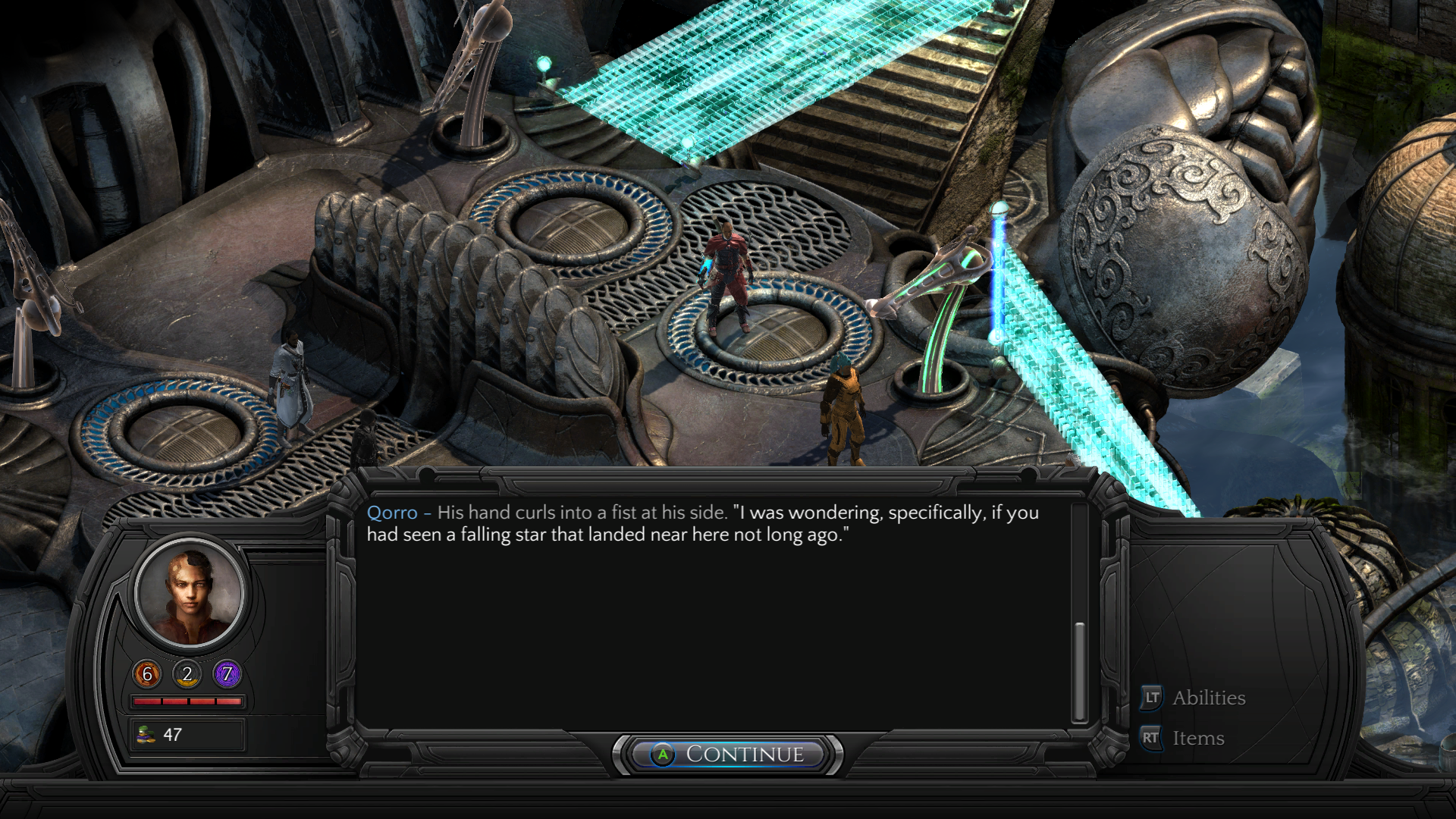
A commendable aspect of Torment: Tides of Numenera is the amount of control, or lack thereof, that the player has over exactly how the game is played. After my first instance of tutorial combat it took nearly two hours for me to see a fight again. This was not because there were no enemies to be found, but because in Torment: Tides of Numenera, combat is almost never the only option. At first I was unaware of this, and I simply felt the game boring and devoid of action, but I quickly grew to appreciate the freedom of existing in the world however I saw fit. I generally tried to avoid combat, and took every risky chance I could to help another. These risky actions, of which there are a large variety, are largely based on RNG. While the inability to repeat many action attempts can be frustrating, it was extremely interesting to be met with failure that did not result in simply missed chances or game overs. Many moments of the story that allow the player to attempt to do something, like repair an object or grab something extremely quickly, have completely different but perhaps equally significant results for success and failure. Even death is usually not a game over.
The aforementioned action attempts, as well as a large portion of combat and other elements in the game, rely on three separate stat pools known as Might, Speed and Intellect. They each work much like a health bar, and like your health in Torment: Tides of Numenera none of them regenerate over time. This is another aspect of the game that creates a steep learning curve for those new to the genre as potion/item gathering is paramount to the continued use of one’s stats. Also frustrating is how much the game seems to lean on specific stats, mostly Might and Intellect. If you can get a handle on weighing your options and using only what you need when you need it, the stat pools can be an engaging and challenging element, but those new to the genre are sure to be frustrated.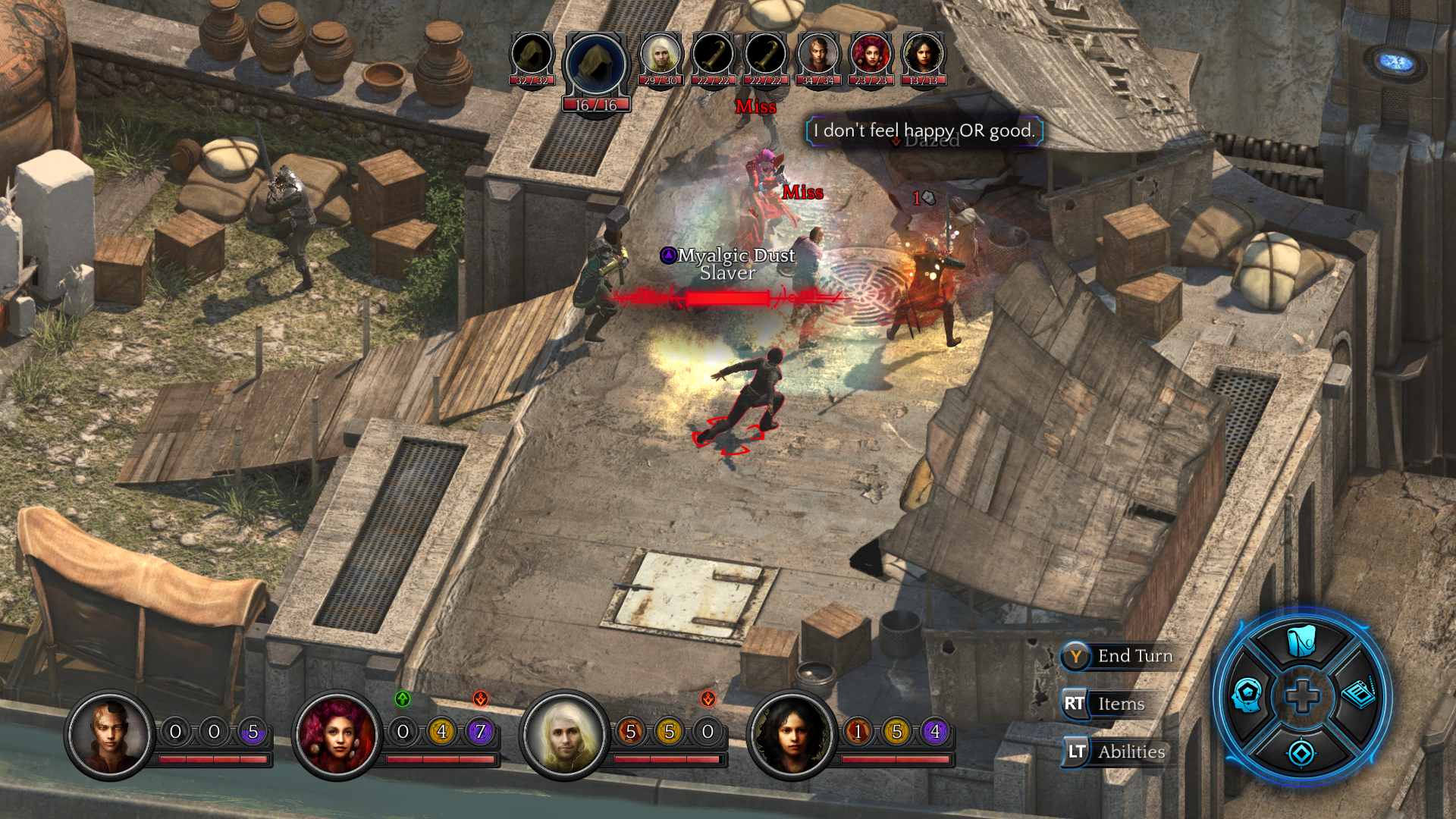
Combat is not at the center of Torment: Tides of Numenera, and it often shows. Aside from technical issues on this front and the purposeful evasion of fighting, some core elements of battle can be extremely frustrating. Because Might is practically the only stat that matters in combat, at least in the beginning hours of the game, it became an obsession. As a fight drags on your character’s Might will inevitably run out, and unless you’ve got a plethora of consumables to fix it you’re going to be stuck with absurdly low hit chances. There were a number of fights that dragged on for 15 or more minutes as my character continued to miss with their mace point-blank while the enemy moved side to side, seemingly failing to locate my character for an attack.
Torment: Tides of Numenera’s companions are mostly solid. There are a number of lines that are questionable at best. “I need somebody to smash me in the face with health,” especially when repeated, gets a little weird. Character specialties are extremely apparent, in that companions range from godly to useless depending on the situation. In the early hours this can be frustrating due to the small pool of choices you have, but as your progress you can continue to specialize your party to your specific playstyle. For me, that was all Might, all fight. Another oddity was how the main player character, know as the Last Castoff, was less an extension of the player and more a generic RTS unit to be commanded. Most of the time a button command to activate a panel was met with a generic grunt, “Ok.”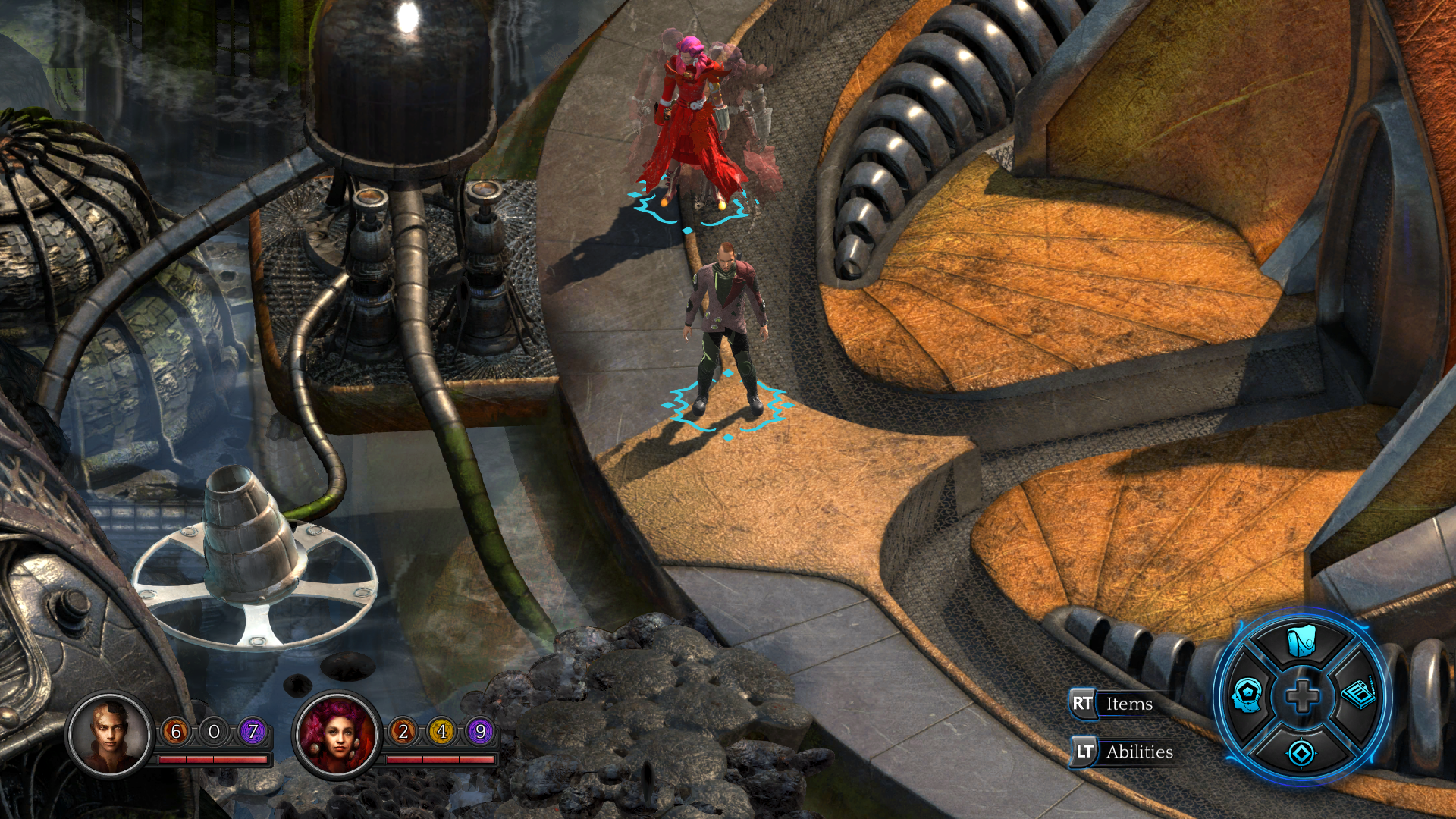
The menus are technically manageable, but left quite a bit to be desired. There’s a quest journal, but no way to select or prioritize quests. Each character has their own inventories, but seemingly no method of sharing or transferring items amongst themselves. Looting objects and activating objects was improved over many CRPGs I’ve played, mainly because when holding the right stick down any interactable objects and what they were became revealed. Speaking to character was often a hassle and I usually had to start a conversation more than once to get it to work.
Technical issues on the Xbox One are where the issues I have with the game become much less subjective. Frame rates on the Xbox One are abysmal. Over the course of my playthrough most of the game felt as if it were running at less than 30fps, the minimum standard on next-gen consoles. The visuals were a confliction of two seemingly different art styles, with beautifully hand-drawn backgrounds and icons and last-gen-era character models and animations, which furthered my surprise at the low frame rates. There were also more game breaking issues, usually centered around combat. On multiple occasions enemy units did nothing more than pace back and forth, resulting in nothing more than a wasted 30 seconds. Once my Last Castoff died during his move, resulting in him getting eternally stuck in his mind-space (where the player goes on death) without being able to end his combat turn, and this is only the tip of the bug-list that I discovered in my less than intensive playthrough.

To its credit, Torment: Tides of Numenera has an incredibly diverse and detailed open world with an engrossing premise. Mixture of sci-fi and mystical elements are enjoyable, and everything feels very much lived in. The story, particularly the main story, is less-than-compelling and often difficult to follow, even when attempting to, but it serves its purpose. The central plot is more of a framework for more intriguing side missions and exploration than a reason to keep playing in itself.

The Final Word
Torment: Tides of Numenera is what it is advertised to be, a return to form for CRPG fans everywhere. For those new to the genre though, Torment: Tides of Numenera may be a frustrating, confusing or boring experience. There are a number of great reasons to play this title, but they are marred by a general lack of polish and stubborn grip on nostalgia.
– MonsterVine Rating: 3 out of 5 – Average

